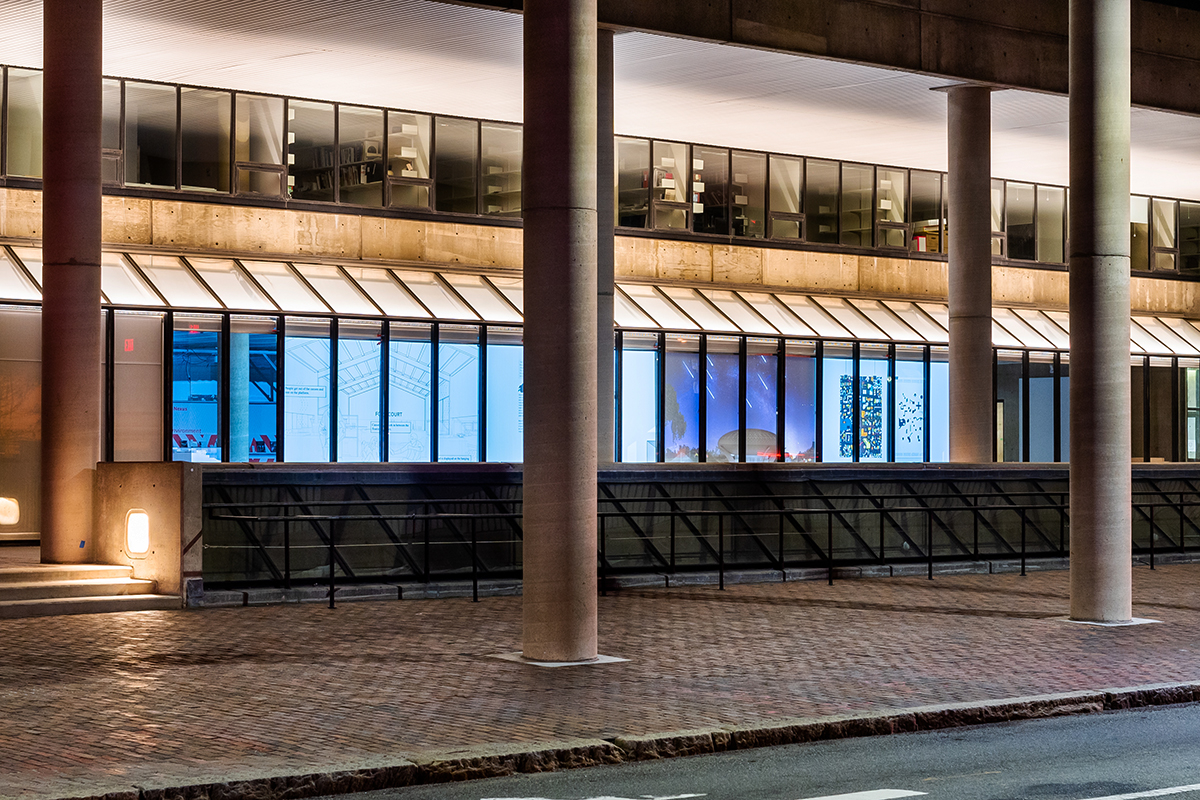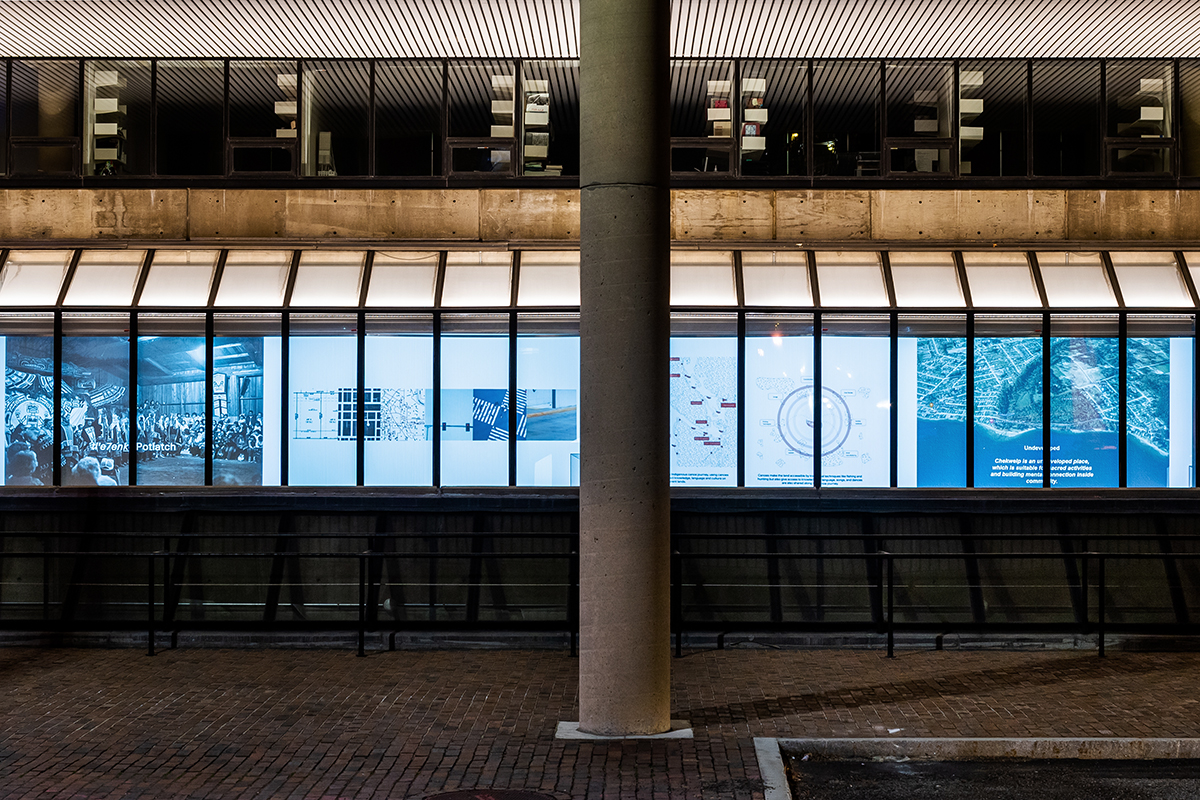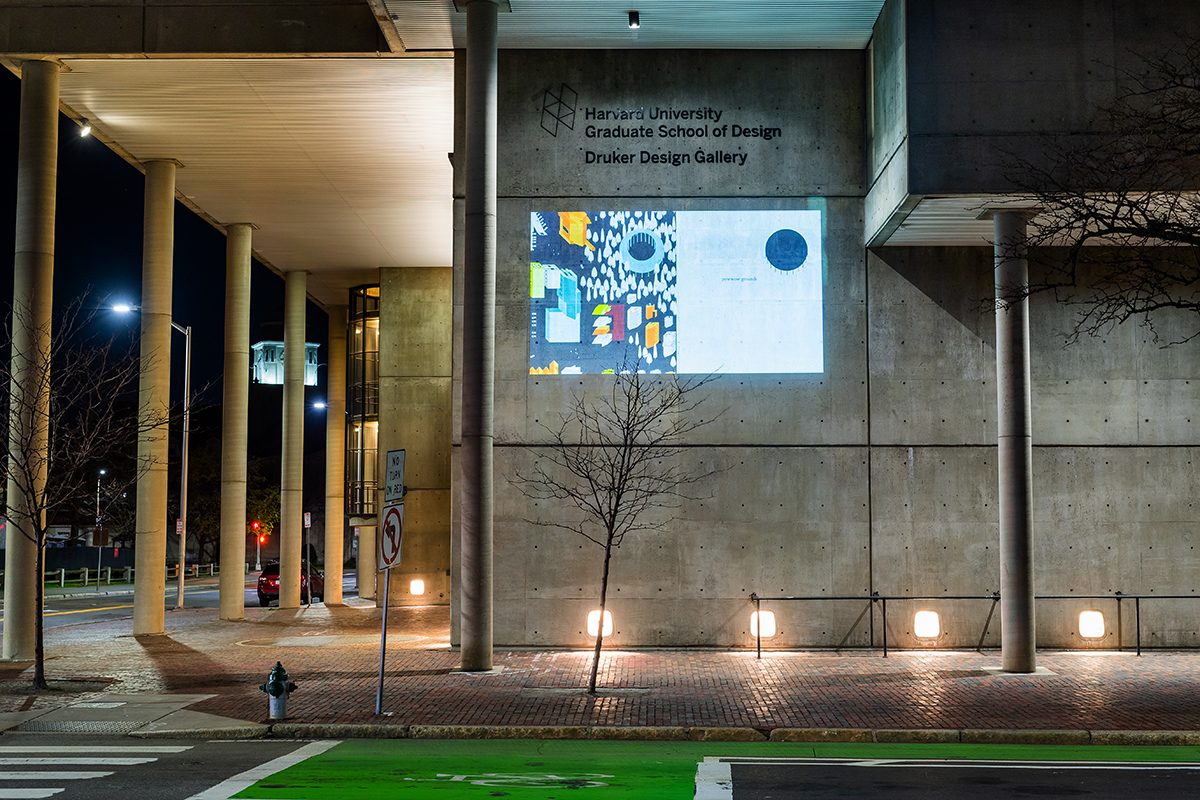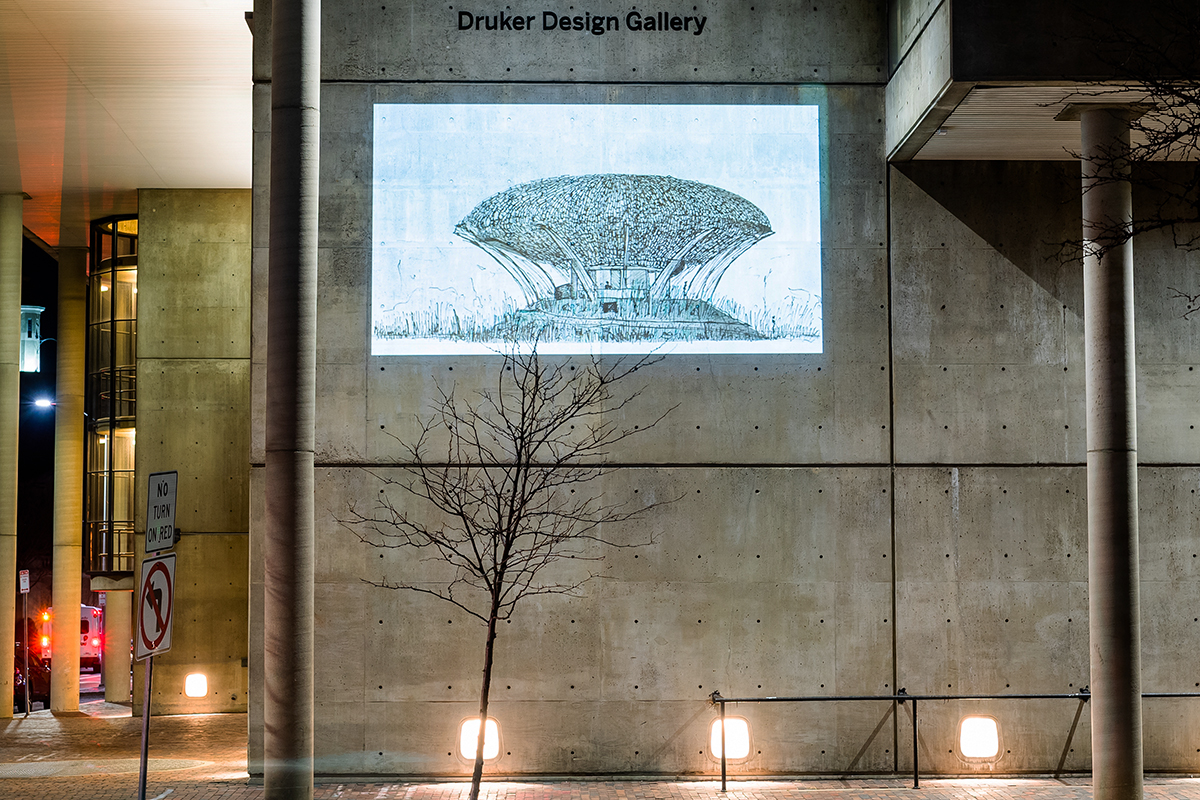Selections from Option Studios “As of Right: First Nations Reclaim the City” and “This Land Is Your Land”
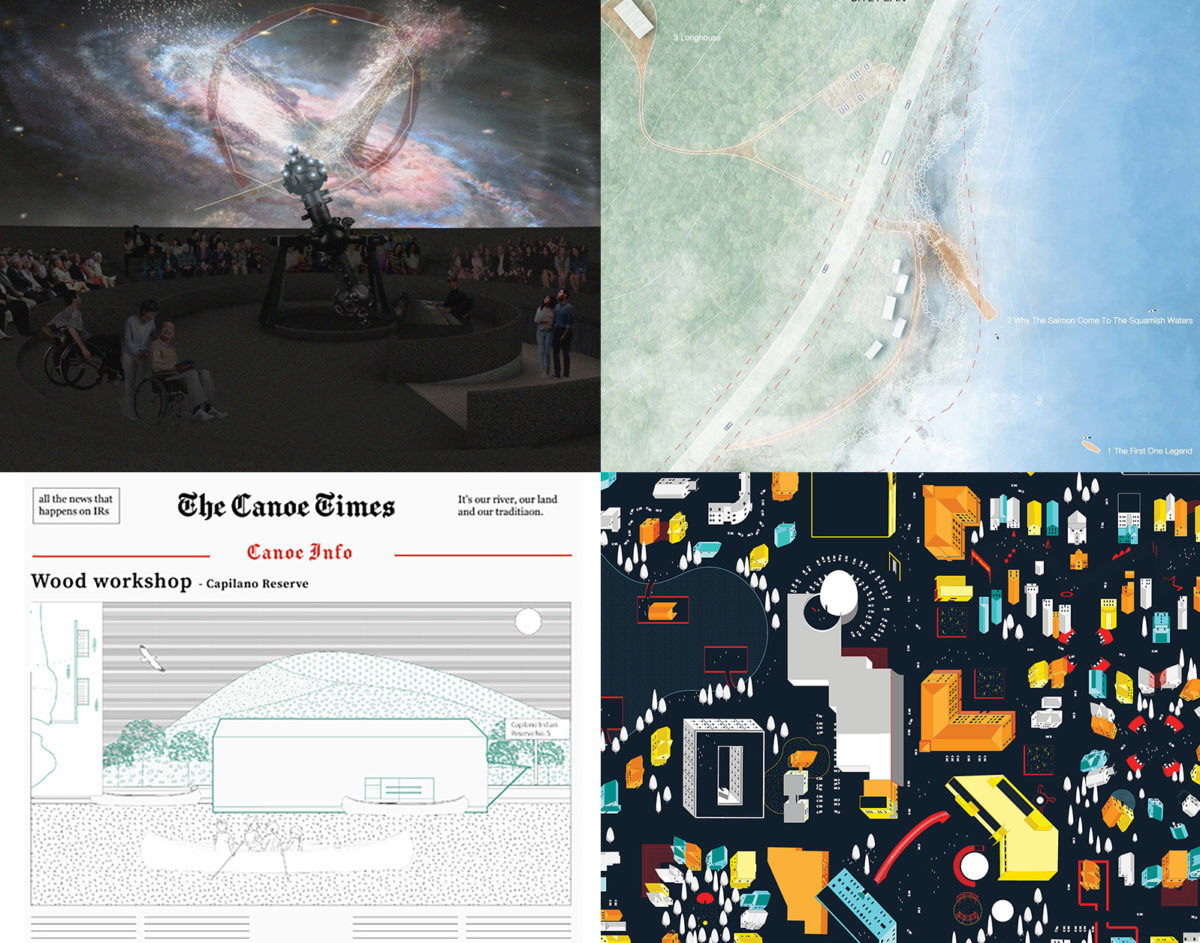
Clockwise from top left: “Kapemni Cosmology Center” by Chris D’Amico, “Squamish Retreat Center” by Tiangang Lyu, “A City Without Lines” by Rachel Coulomb, and “The Canoe Times” by Xin Feng
Four short films highlight a selection of projects from the Department of Urban Planning and Design.
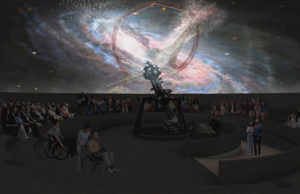
Kapemni Cosmology Center
In writings about Dakota’s beliefs about the cosmos, there consistently appears to be a mirrored, parallel relationship between the land and the stars. Particularly among the Lakota people to the west, there is a direct connection between ceremony performed, transition of season, animal migration, significance of place, and constellation position. This is often interpreted by the twisting diagram signified by the word Kapemni, which is a cone or teepee that represents each version of reality, the earth and heavens mirrored in twisting contact having a discussion with one another.
This project offers two cosmic objects influenced by the traditional community construction processes of the Dakota, Lakota, and Anishnaabe for their use in offering star shows large and small. Both objects reflect the principles of star theology centered in the experiences and lived traditions of these groups. Whereas one object is a permanent museum and cosmology center to be built in a park setting using local materials, sloping elevations and twisting circulation between the earth and the sky, the other object is a pop-up to be sent out to various schools and events as a way to introduce a traveling educational show centered around Native American star theology.
Author: Chris D’Amico, MAUD 2021
Instructor: Daniel D’Oca, Associate Professor in Practice of Urban Planning
Option Studio: This Land Is Your Land
Collaborators and Community Partners: The Native American Community Development Institute (NACDI)
Duration: 2 min, 3 sec
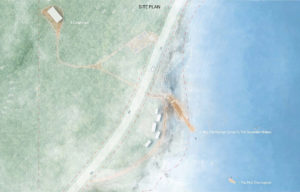
Squamish Retreat Center
Indian Reserves (IRs) in Squamish Nation are spatially separated. This distribution pattern may be having an effect on communication and the spread of information and culture. An analysis of Squamish Nation members’ feedback on social media shows that many are concerned about the disconnection between the next generation and traditional Squamish Culture and Language. This project attempts to transform traditional First Nation legends into landscape structure, to act as a physical documentation of oral tradition and pass it to the next generation. This retreat focuses on First Nation culture, and excludes the colonial marks as much as possible. In addition, the retreat has a virtual version. A powerful virtual community could offer Squamish Nation members living around the world a way to stay connected with their Nation from afar.
Author: Tiangang Lyu, MLA I 2021
Instructor: Daniel D’Oca, Associate Professor in Practice of Urban Planning
Option Studio: As of Right: First Nations Reclaim the City
Teaching Assistants: Heidi Brandow (MDes 2021), Elsa Hoover (MArch I 2023)
Community: Squamish Nation
Duration: 4 min, 9 sec
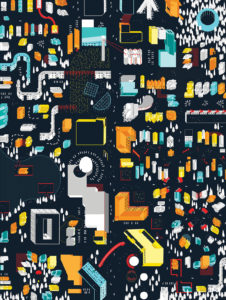
A City Without Lines
The Dawes Act of 1887 authorized the federal government to break up tribal lands by partitioning them into individual plots. Only those Indigenous Americans who accepted the individual allotments were allowed to become US citizens. This is just one of many examples in which the colonial act of a line tore apart Indigenous traditions and culture. Today, cities are still built upon lines. They are governed by invisible lines of property, parcels, and zoning, infrastructure lines of stoplights, crosswalks, and sidewalks, and architectural lines of street walls and corners.
This project questions the act of the line by removing it. What are the future possibilities of a City without Lines along the American Indian Cultural Corridor? How can we as designers decolonize our own methodologies through a reinterpretation of a city’s near future? If property does not exist there can be no ownership. The land becomes a community trust, where future programming is an agreement between those that live there. Power is placed back in the people through an environmental and social stewardship model, thus creating heightened responsibility and respect for the land one occupies. Backyards become sculpture gardens, rooftops become planetariums, urban voids become farms, neighbors become families.
The city becomes an expression of generational Indigenous values. And these values are realized in the representation of the corridor as a counter-cartography that conveys the community’s sense of itself rather than the organization of land. Just as the line is no longer a boundary, but a series of connections, the map is no longer the enemy, but a depiction of stories.
This land is your land.
This city is your city.
Author: Rachel Coulomb, MArch I 2022
Instructor: Daniel D’Oca, Associate Professor in Practice of Urban Planning
Option Studio: This Land Is Your Land
Credits: The Native American Community Development Institute (NACDI); All My Relations Art Gallery; Ed Minnema, NACDI; ; Elizabeth Day, NACDI; Pamela Johns, NACDI; Robert Lilligren, NACDI; Sam Olbekson, NACDI; Full Circle Indigenous Planning; Alexandra Buffalohead , NACDI, All My Relations; Angela Two Stars, NACDI, All My Relations; Kjersti Monson, Friends of the Falls; Joe Hobot, American Indian OIC; Kelly Drummer, Migizi Communications; Becky Wolf, Franklin Library; Chris Cornelius, Studio Indigenous; David Fortin, David Fortin Architects; Joseph Kunkel, MASS Design Group; Philip Deloria, Harvard University; Donald Fixico, University of New Mexico; Jaida Gray Eagle, Photographer; Louise Matson, Division of Indian Work; Mariah Gladstone, Indigikitchen; Mark Turcotte, Expanding Chippewas; Andrea Carlson, The Uncompromising Hand
Duration: 4 min, 38 sec
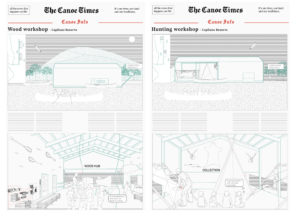
The Canoe Times
Canoes go back to the Great Flood myth, and exist at the nexus between technology and living beings. This project aims to bring back canoes, not only as transportation but as a tool to connect separated lands spatially and culturally. With the proposed daily canoe journey, inter-generations from different Indian Reservations are no longer disconnected, and culture could thrive as the right to the land and river is reclaimed.
Most of the community’s children are educated in regional schools where little traditional culture is taught. Based on this condition, this project challenges the notion of excluding Indigenous wisdom and knowledge and uses the daily canoe journey route as a way to reconnect people, land, and culture.
Through the newspaper format, people from cross-generations could register to be the educators or the participants. By providing venues and convenient transportation, Indigenous stories, language, and culture will take root and thrive.
Author: Xin Feng, MLA I AP + MDes 2022
Instructor: Daniel D’Oca, Associate Professor in Practice of Urban Planning
Option Studio: As of Right: First Nations Reclaim the City
Credits: The Harvard Indigenous Design Collective (HIDC), The Squamish Nation, Union of British Columbia Indian Chiefs
Duration: 4 min, 10 sec
During the COVID-19 pandemic, the galleries in Gund Hall have been turned ‘inside out,’ with exhibitions shown through a series of exterior projections on the building’s facade.
